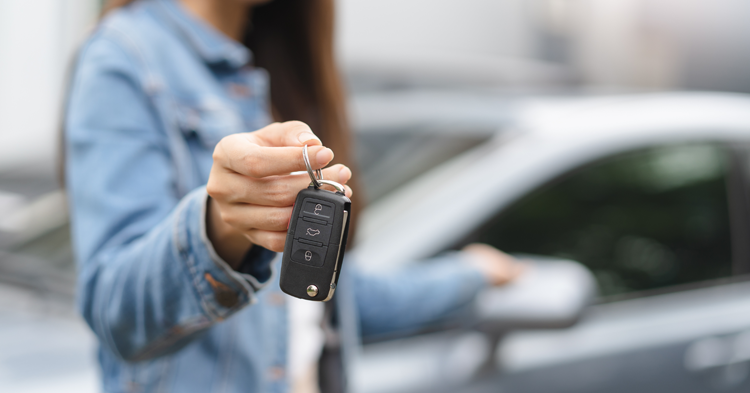
While many parents may dread it, many teenagers look forward to getting their driver’s license and the freedom it brings. Driving also brings responsibility with it, which some teenagers fail to understand. The rate of traffic accidents for teenager drivers is higher than for any group of people. Over 3,000 teenagers between the ages of 15 and 19 were killed in car accidents in 2009, according to the Centers for Disease Control. The reason for the high statistics is that teenagers are less likely to recognize hazards on the road, do not have the experience with driving that older drivers do, and may be more likely to engage in risky behavior on the road.
Tips for Safe Teenage Driving Parents Can Share with Their Children
- Wear seat belts. Most teenagers should have been wearing seat belts since the time they were young, but peer pressure and a lack of an adult presence in the car may tempt them to skip the seat belt. A teenage driver should always buckle up and make sure everyone else in the car is buckled up too. The belts offer a great deal of protection in the event of a crash.
- Avoid Texting and Driving. Teenagers should avoid using their cell phones behind the wheel entirely. Texting is particularly dangerous, as it requires the teen to take their eyes off of the road while typing in the message. Distracted driving led to 16 percent of deaths from car crashes in 2009.
- Do not drive while intoxicated. It is illegal for teenagers to drink alcohol. It is also illegal for teenagers and adults to take drugs such as Ecstasy or cocaine. These drugs also impair a driver’s ability to operate their car, putting them at greater risk for an accident.
- Follow all the rules of the road. Traffic rules exist to keep drivers and passengers safe on the road. Teenagers need to know the importance of stopping at stop signs and red lights as well as using turn signals and giving the right of way to pedestrians and bicyclists
- Stay alert at intersections. Teens need to remember to keep particularly alert when passing through intersections. A car may decide to run a red light at the last-minute, causing a crash if the teen begins to drive right when their light turns green. They should always look in both directions before entering the intersection to make sure no one is coming.
- Be careful driving at night. Many states have restrictions on how late a teenage driver can be on the road. Teens need to recognize that driving in the dark is more dangerous than driving in the daytime and adjust their driving accordingly. They should always use headlights at night.
- Be in by curfew. Curfews exist for a reason. Teens who stay out too late risk getting in an accident or getting a ticket when they are pulled over.
- Getting enough sleep. Falling asleep at the wheel is a big concern. Teens should not drive if they feel sleepy. If they get sleepy behind the wheel, they should pull over and call for help.
- Maintain the car. Teens need to understand the importance of maintaining their vehicle, from changing the oil regularly to keep the engine running smoothly, to keeping the tires well-inflated.
- Keep the gas tank full. If a teenager does not keep an eye on the gas gauge regularly, they may end up stranded somewhere without any gasoline or without a way to easily obtain more.
- Know where they are going. Anytime a teenager needs to drive somewhere unfamiliar, they should bring printed directions with them, as well as the contact number of place they are trying to reach, so that they can call if there are any issues. A GPS and atlas in the car are also useful for preventing the teen from getting lost.
- Check traffic before leaving. To avoid congestion and the risk of an accident, teenagers should listen to or look at traffic reports before heading out. They can plan their route around traffic.
- Don’t speed. Speeding is one of the leading causes of car accidents among teens. Teenagers need to recognize the importance of driving the speed limit, not just for their safety, but for the safety of others in cars or on foot.
- Be careful driving with friends or other passengers. Other people in the car can distract a teenager while they are driving. Teens and parents need to remind passengers not to yell or otherwise distract the driver.
- Check the car before driving, every time. Teens should inspect their car for damage or other issues before they start driving every time they get behind the wheel. They should test the windshield wipers, turn signals and headlights. They should also look at the tires to make sure they have plenty of air.
Further resources on teen driving:
- Teenage Driving Statistics – A list of statistics from the state of CA, including reasons why teens are more likely to be injured or killed in a car crash.
- Teen Drivers Fact Sheet – Information from the CDC on teenage drivers, including tips for safer driving.
- Characteristics of Adolescence That Can Affect Driving – Article on the ways teenagers differ from adults and how these differences impact teenager’s driving.
- Winter Driving Safety – Tips for safe driving in winter weather.
- I Spy: A Teenager Driver – Article on parents using GPS systems to keep track of their teenager’s driving habits.
- Ford’s MyKey to Safety Controls Speed, Music – News article from the USA Today on a device in cars that limits a driver’s speed and ability to turn the music up.
- Reducing Alcohol Related Crashes – Article on discouraging teenage driving to prevent accidents.
- Parent-Teenager Driving Contract (PDF) – A contract from the WI DMV that parents and teens can sign.





